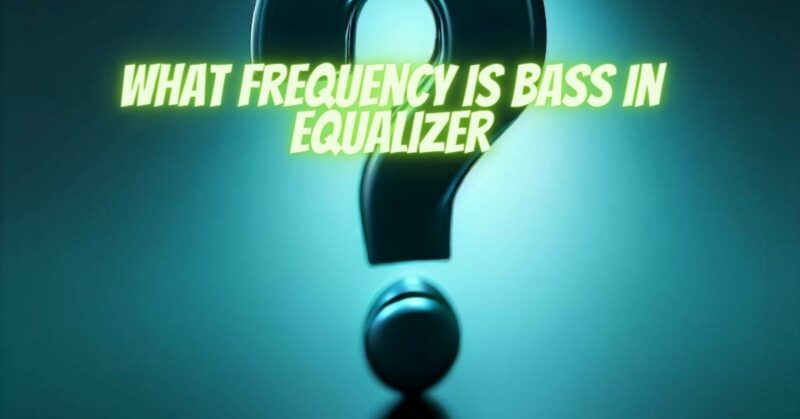Equalization, or EQ, is a fundamental tool in music production and audio engineering. It allows you to shape the tonal characteristics of a sound by adjusting its frequency content. When it comes to bass frequencies, knowing the ideal frequency range to focus on can greatly enhance the clarity, depth, and impact of your music. In this article, we’ll explore what frequency the bass typically falls within on an equalizer and how to effectively use EQ to shape your low-end.
Defining the Bass Frequency Range
The bass frequency range refers to the lower portion of the audio spectrum, where the deeper and more resonant tones reside. While the exact boundaries of the bass range can vary depending on context, it generally spans from approximately 60 Hz to 250 Hz.
- Sub-Bass (20 Hz – 60 Hz): The sub-bass range encompasses the deepest and most powerful frequencies that are felt more than heard. These ultra-low frequencies, often below 60 Hz, provide the foundation for the low-end energy in music, adding depth and impact.
- Bass (60 Hz – 250 Hz): The bass range, often referred to simply as “bass,” covers the frequencies from 60 Hz to 250 Hz. This range includes the fundamental frequencies of bass instruments like the electric bass guitar and the double bass. It plays a crucial role in defining the groove, rhythm, and warmth of a track.
The Role of Bass Frequencies in Music
Bass frequencies contribute significantly to the overall sound and impact of music:
- Rhythm and Groove: Bass frequencies in the 60 Hz to 250 Hz range provide the rhythmic foundation of a track, driving the groove and making listeners want to move.
- Warmth and Depth: The bass range adds warmth and depth to music, creating a sense of fullness and richness in the sound.
- Support and Foundation: Bass frequencies provide support and serve as the foundation for other instruments and vocals in a mix, helping to glue the musical arrangement together.
Using Equalization for Bass
When using EQ to shape bass frequencies, consider the following:
- Cutting Unwanted Frequencies: To reduce muddiness or remove unwanted frequencies, apply a cut (reduction) in the lower bass range (60 Hz – 150 Hz) using a high-pass filter or a parametric EQ.
- Enhancing Clarity and Definition: To enhance the clarity and definition of the bass, apply a boost in the upper bass range (150 Hz – 250 Hz) to emphasize the fundamental frequencies of the instrument.
- Sculpting Tone: Use a parametric EQ to sculpt the tone of the bass, emphasizing or de-emphasizing specific frequencies to match the musical context and style.
- Monitoring: Use high-quality studio monitors or headphones to accurately hear and adjust the bass frequencies. Additionally, consider using spectrum analyzers and audio analysis tools to visualize the frequency distribution.
- Context Matters: Keep in mind that the ideal EQ settings for bass can vary depending on the musical genre, the specific instrument, and the mix. Always listen within the context of the entire production.
Understanding what frequency bass typically falls within on an equalizer is essential for achieving a well-balanced and impactful low end in your music. By effectively using EQ to shape the bass frequencies, you can enhance the clarity, depth, and groove of your tracks, ensuring that the low-end elements provide the foundation for an engaging and satisfying listening experience.


